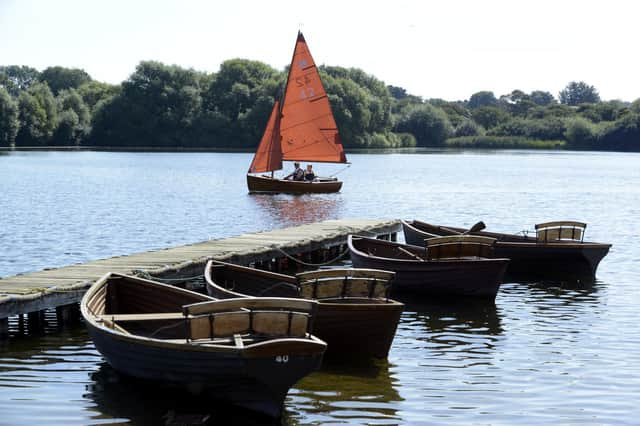Wetland lagoons to be built at Hornsea Mere to cut flooding risk and clean up water


The aim of the £2.7m scheme, led by East Riding Council, is to cut the risk of flooding and improve water quality at Hornsea Mere, a popular visitor attraction, and East Yorkshire’s last remaining glacial lake.
Over 20 homes and businesses were flooded in the vicinity of the mere in 2007, with smaller incidents following in 2012 and 2019.
Advertisement
Hide AdAdvertisement
Hide AdThe project, one of the first of its kind led by a council, will involve building wetland lagoons along Foss Dyke, one of the feeder streams into the mere.
The watercourse runs under Hull Road – which was impassable for a time during the 2007 floods.
The lagoons will store flood water during prolonged heavy rain, reducing the risk of flooding to 45 homes and businesses. Reedbeds will act as natural filters, cleaning up the water, and should also improve biodiversity.
The mere gets run off from surrounding agricultural land, including phospates and nitrates, and is considered to be of “poor ecological status” despite being a protected Site of Special Scientific Interest and Special Protection Area.
Advertisement
Hide AdAdvertisement
Hide AdThe council says it will be speaking to local residents as part of the development of the scheme and the detailed design process.
It expects to start construction in early 2024, subject to planning permission and obtaining the necessary permissions.
Earlier this year Yorkshire Water announced it was spending £2m on tackling nutrient pollution in the mere. It came as the Government and Natural England announced new rules limiting the approval of new homes close to dozens of protected areas across the country where nutrient levels are high – one of which is Hornsea Mere.
The Government said at the time: “One of the significant causes of decline in our protected sites is the damage caused by nutrient pollution in water courses. Nutrient pollution is a particular problem for our freshwater habitats and estuaries.
Advertisement
Hide AdAdvertisement
Hide Ad“Increased levels of nutrients (especially nitrogen and phosphorus) can speed up the growth of certain plants, disrupting natural processes and impacting wildlife.”
It said the sources of excess nutrients are site specific, but predominantly originate from wastewater treatment works and agricultural pollution.
Speaking about the council's scheme, portfolio holder Councillor Chris Matthews said: “This is another example of a fantastic flood scheme to be delivered by the council. I am especially encouraged that the scheme will provide additional environmental enhancements to improve water quality and biodiversity at the Mere.
“Once complete, the scheme will reduce flood risk to many properties in Hornsea and I look forward to seeing the scheme progress over the coming years.”
Comment Guidelines
National World encourages reader discussion on our stories. User feedback, insights and back-and-forth exchanges add a rich layer of context to reporting. Please review our Community Guidelines before commenting.